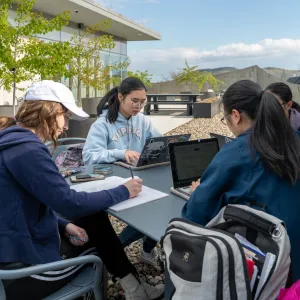IDP 133: Critical Perspectives on Collaborative Leadership
Offered in the Fall
Traditional conceptions of leadership set up leading and working as a team as diametrically opposed; “leaders” are often understood as those who achieve greatness through their own powers of persuasion or individual achievement, while “teams” are often framed as leaderless efforts that move forward by virtue of dispersed contributions to a project or initiative. This course challenges students to interrogate this perceived dichotomy by viewing theories and histories of leadership and collaboration through a critical lens and exploring alternative ways of imagining change-making as a collaborative leadership act. Through reading, writing, reflection and practice, the class will offer students new perspectives on how they might bring others into collaboration by intentionally creating a productive team culture and modeling processes that encourage others to step in and out of the lead. This course is especially useful as a foundation for those students whose future academic (or life!) work is likely to engage them in significant group work.
LEAD Scholars and LEAD Corps
Overview
The Leaders for Equity-Centered and Action-Based Design (LEAD) Scholars Program is a one-year cohort program that focuses on building leadership capacity through both examining leadership through a social justice lens and learning skills of facilitation and design for social change. The Wurtele Center for Collaborative Leadership and the Office for Equity and Inclusion have designed this program with the mission of equipping students with the skills to apply equity-centered design to address some of our greatest social inequities. A small cohort of students will explore who they are as leaders, how their social identities impact their leadership, how to develop deep and meaningful relationships with one another, and the processes of design and facilitation to serve as references and consultants to the greater campus community.
After year one, scholars have the opportunity to apply to be a member of the LEAD Corps. Selected corps members will engage with the community to offer themselves as solution and experience designers. They’ll learn and practice deeper facilitative leadership strategies, such as deep listening, radical collaboration, emergent strategy and liberatory design. As solution designers they will work to support community members in creating solutions to problems arising in such communities as clubs, organizations and teams. As experience designers they will create and offer facilitated conversations and workshops about social justice and lead programs in houses and communities around campus.
Collaborative Leadership and Design Immersions (CLDI Fellows)
Overview
Collaborative Leadership and Design Immersions (CLDI) is an integrative cohort program sponsored in partnership by the Wurtele Center for Collaborative Leadership and the Design Thinking Initiative (DTI). CLDI is for students who are looking for intensive opportunities to put collaborative leadership skills into practice. The program offers students an opportunity to learn, develop, and apply human-centered design leadership in a real-world setting. CLDI connects students with embedded, fully paid summer internship experiences around the world where they will have a chance to practice collaborative change-making in the context of a local organization and help lead the advancement of socially, economically, and environmentally healthy communities. The program partners with host organizations in countries around the world and in the domestic U.S., and selects Fellows to work in those organizations in teams of 2-4. We support these teams through deep learning in human-centered design and collaborative leadership prior to their internship experience, and help them reflect on and share their experiences upon their return.










